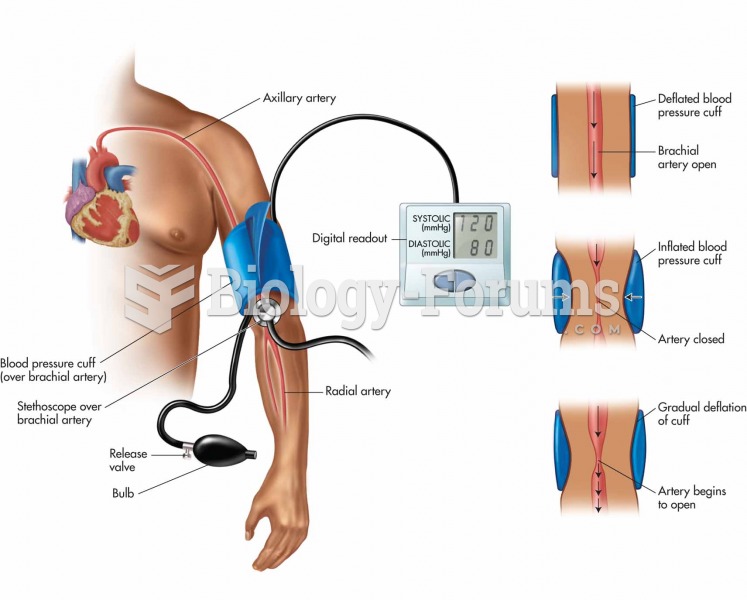Answer to Question 1
C
The trigeminal nerve is tested by applying light sensation with a cotton ball to symmetric areas of the face. Sensations should be symmetric; unilateral decrease or loss of sensation may be caused by a CN V lesion. Assess CN III (oculomotor), IV (trochlear), and VI (abducens) by assessing extraocular movement (EOM) functioning. Ask the patient to follow the movement of your finger through the six cardinal positions of gaze; measure pupillary reaction to light reflex and accommodation using a penlight. The facial nerve is tested by having the patient smile, frown, puff out their cheeks, and raise and lower their eyebrows while you look for asymmetry. The oculomotor nerve is tested by assessing directions of gaze and by testing pupillary reaction to light and accommodation.
Answer to Question 2
A
Assess cranial nerve (CN) VII (facial) by noting facial symmetry. Have the patient frown, smile, puff out their cheeks, and raise their eyebrows. Expressions should be symmetrical; Bell's palsy causes drooping of the upper and lower face; cerebrovascular accident (CVA) causes asymmetry. Assess cranial nerve CN V (trigeminal) by applying light sensation with a cotton ball to symmetric areas of the face. Sensations should be symmetric; unilateral decrease or loss of sensation is possibly due to a CN V lesion or a lesion in higher sensory pathways. Assess CN III (oculomotor), IV (trochlear), and VI (abducens) by assessing extraocular movement (EOM) functioning. Ask the patient to follow the movement of your finger through the six cardinal positions of gaze; measure pupillary reaction to light reflex and accommodation using a penlight. These cranial nerves are most likely to be affected by increasing intracranial pressure (ICP), which causes a change in pupil response or pupil size; sometimes pupils change shape (more oval) or react sluggishly. ICP impairs EOMs. Damage to CN IX causes impaired swallowing; damage to CN X causes loss of gag reflex, hoarseness, and a nasal voice. When the palate fails to rise and the uvula pulls toward the normal side, this indicates a unilateral paralysis.







